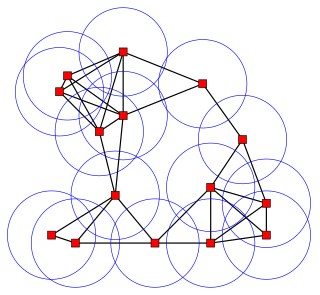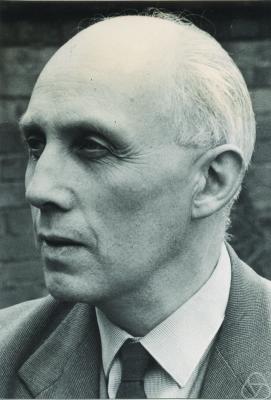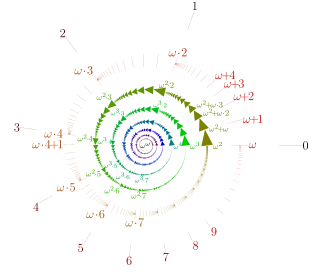Career
Larson was raised in the San Francisco Bay Area,and graduated from the University of California,Berkeley in 1968 with a bachelor's degree in mathematics and a minor in English. As an undergraduate,she had planned to go into teaching,but a mentor at Berkeley,logician John W. Addison Jr.,recognized her talent for mathematics and encouraged her to go on to graduate study. [2] She earned her Ph.D. under the supervision of James Earl Baumgartner at Dartmouth College in 1972, [3] becoming the first woman to obtain a mathematics PhD there. [2]
Larson became an E. R. Hedrick Assistant Professor at the University of California,Los Angeles from 1972 to 1974. She has been affiliated with the University of Florida since 1974,where she was promoted to full professor in 1987 and served as Associate Chair for Graduate Studies from 1993 to 1996. [4] In 2002 Larson became chair of the faculty senate at the University of Florida. She credits her Quaker religious practice for making her a good listener and a "consensus builder",two qualities she sees as important in campus leadership. [2]
Research
Much of Larson's research is in infinitary combinatorics,studying versions of Ramsey's theorem for infinite sets. [2] [4] Her doctoral dissertation,On Some Arrow Relations,was in this subject. [3] She has been called a "prominent figure in the field of partition relations",particularly for her "expertise in relations for countable ordinals". [5] Five of her publications are with Paul Erdős,who became her most frequent collaborator. [6] Erdős,another prominent combinatorialist,visited Larson and others at the University of Florida for two weeks per year every year from 1973 to 1996. [7]
In the theory of linear spaces,the Drake–Larson linear spaces are named after Larson and her co-author and University of Florida colleague David A. Drake. These are linear spaces (finite systems of points and lines,with at least two points on every line,a line through every two points,and not all points on a single line) such that none of the lines have exactly two,three,or six points. When such a space exists,it can be used to construct certain kinds of Latin squares. In a 1983 paper,Drake and Larson determined the possible numbers of points in these spaces,with one exception,the spaces with exactly thirty points. This case was an open problem for many years, [8] until it was resolved in 2010 by Betten and Betten. [9]
Combinatorics is an area of mathematics primarily concerned with counting, both as a means and as an end to obtaining results, and certain properties of finite structures. It is closely related to many other areas of mathematics and has many applications ranging from logic to statistical physics and from evolutionary biology to computer science.
Proof theory is a major branch of mathematical logic and theoretical computer science within which proofs are treated as formal mathematical objects, facilitating their analysis by mathematical techniques. Proofs are typically presented as inductively-defined data structures such as lists, boxed lists, or trees, which are constructed according to the axioms and rules of inference of a given logical system. Consequently, proof theory is syntactic in nature, in contrast to model theory, which is semantic in nature.
In mathematics, a weakly compact cardinal is a certain kind of cardinal number introduced by Erdős & Tarski (1961); weakly compact cardinals are large cardinals, meaning that their existence cannot be proven from the standard axioms of set theory.

In mathematics, the Erdős–Ko–Rado theorem limits the number of sets in a family of sets for which every two sets have at least one element in common. Paul Erdős, Chao Ko, and Richard Rado proved the theorem in 1938, but did not publish it until 1961. It is part of the field of combinatorics, and one of the central results of extremal set theory.
Reverse mathematics is a program in mathematical logic that seeks to determine which axioms are required to prove theorems of mathematics. Its defining method can briefly be described as "going backwards from the theorems to the axioms", in contrast to the ordinary mathematical practice of deriving theorems from axioms. It can be conceptualized as sculpting out necessary conditions from sufficient ones.
Combinatorics is a branch of mathematics concerning the study of finite or countable discrete structures.

Discrete geometry and combinatorial geometry are branches of geometry that study combinatorial properties and constructive methods of discrete geometric objects. Most questions in discrete geometry involve finite or discrete sets of basic geometric objects, such as points, lines, planes, circles, spheres, polygons, and so forth. The subject focuses on the combinatorial properties of these objects, such as how they intersect one another, or how they may be arranged to cover a larger object.

Richard Rado FRS was a German-born British mathematician whose research concerned combinatorics and graph theory. He was Jewish and left Germany to escape Nazi persecution. He earned two PhDs: in 1933 from the University of Berlin, and in 1935 from the University of Cambridge. He was interviewed in Berlin by Lord Cherwell for a scholarship given by the chemist Sir Robert Mond which provided financial support to study at Cambridge. After he was awarded the scholarship, Rado and his wife left for the UK in 1933. He was appointed Professor of Mathematics at the University of Reading in 1954 and remained there until he retired in 1971.

Ben Joseph Green FRS is a British mathematician, specialising in combinatorics and number theory. He is the Waynflete Professor of Pure Mathematics at the University of Oxford.

James Earl Baumgartner was an American mathematician who worked in set theory, mathematical logic and foundations, and topology.
In mathematics, infinitary combinatorics, or combinatorial set theory, is an extension of ideas in combinatorics to infinite sets. Some of the things studied include continuous graphs and trees, extensions of Ramsey's theorem, and Martin's axiom. Recent developments concern combinatorics of the continuum and combinatorics on successors of singular cardinals.
In mathematical set theory, an ω-Jónsson function for a set x of ordinals is a function with the property that, for any subset y of x with the same cardinality as x, the restriction of to is surjective on . Here denotes the set of strictly increasing sequences of members of , or equivalently the family of subsets of with order type , using a standard notation for the family of subsets with a given order type. Jónsson functions are named for Bjarni Jónsson.
András Hajnal was a professor of mathematics at Rutgers University and a member of the Hungarian Academy of Sciences known for his work in set theory and combinatorics.

In set theory, an ordinal number, or ordinal, is a generalization of ordinal numerals aimed to extend enumeration to infinite sets.
In arithmetic combinatorics, the Erdős–Szemerédi theorem states that for every finite set A of integers, at least one of the sets A + A and A · A form a significantly larger set. More precisely, the Erdős–Szemerédi theorem states that there exist positive constants c and ε such that, for any non-empty set A ⊂ ℕ,
This is a glossary of terms and definitions related to the topic of set theory.

Tamar Debora Ziegler is an Israeli mathematician known for her work in ergodic theory, combinatorics and number theory. She holds the Henry and Manya Noskwith Chair of Mathematics at the Einstein Institute of Mathematics at the Hebrew University.

József Solymosi is a Hungarian-Canadian mathematician and a professor of mathematics at the University of British Columbia. His main research interests are arithmetic combinatorics, discrete geometry, graph theory, and combinatorial number theory.
This page is based on this
Wikipedia article Text is available under the
CC BY-SA 4.0 license; additional terms may apply.
Images, videos and audio are available under their respective licenses.









